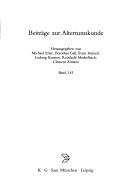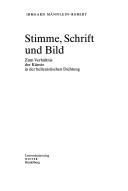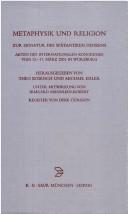| Listing 1 - 10 of 12 | << page >> |
Sort by
|

ISBN: 3598776926 3111840905 3110955512 Year: 2011 Volume: 143 Publisher: Leipzig : B. G. Teubner,
Abstract | Keywords | Export | Availability | Bookmark
 Loading...
Loading...Choose an application
- Reference Manager
- EndNote
- RefWorks (Direct export to RefWorks)
Greek literature --- Greek philology --- Philosophy, Ancient. --- Rhetoricians --- History and criticism. --- Study and teaching --- Philosophy, Ancient --- Linguists --- Philologists --- Ancient philosophy --- Greek philosophy --- Philosophy, Greek --- Philosophy, Roman --- Roman philosophy --- Classical philology --- Greek language --- History and criticism --- Longinus, Cassius, --- Longinos, --- Longinos, Kassios, --- Longinus, Cassius --- Longinus, Dionysius Cassius, --- Longinus, Gaius Cassius, --- Λογγῖνος, Κάσσιος, --- Athens (Greece) --- Tadmur (Syria) --- Tudmur (Syria) --- Tadmor (Syria) --- Tedmor (Syria) --- Palmyra (Syria) --- Palmyre (Syria) --- Palmyra --- Intellectual life.

ISBN: 9783825352547 3825352544 Year: 2007 Volume: 119 Publisher: Heidelberg Universitätsverlag Winter
Abstract | Keywords | Export | Availability | Bookmark
 Loading...
Loading...Choose an application
- Reference Manager
- EndNote
- RefWorks (Direct export to RefWorks)
Art and literature --- Greek literature, Hellenistic --- Art et littérature --- Littérature grecque hellénistique --- History and criticism --- Histoire et critique --- Hellenism in literature --- Art and literature. --- Greek poetry, Hellenistic. --- Art et littérature --- Littérature grecque hellénistique --- Greek poetry, Hellenistic --- Hellenistic Greek poetry --- Literature and art --- Literature and painting --- Literature and sculpture --- Painting and literature --- Sculpture and literature --- Aesthetics --- Literature
Periodical
Year: 2013 Publisher: Stuttgart Franz Steiner
Abstract | Keywords | Export | Availability | Bookmark
 Loading...
Loading...Choose an application
- Reference Manager
- EndNote
- RefWorks (Direct export to RefWorks)

ISBN: 3598777094 3111831760 3110975521 Year: 2002 Volume: 160 Publisher: München Leipzig K.G. Saur
Abstract | Keywords | Export | Availability | Bookmark
 Loading...
Loading...Choose an application
- Reference Manager
- EndNote
- RefWorks (Direct export to RefWorks)
#GOSA:II.P.AU.1 --- #GOSA:V.Oud.Plo.M --- #GOSA:V.Oud.Alg.M --- Conferences - Meetings --- Metaphysics --- Philosophy and religion --- Philosophy, Ancient --- History --- Christianity and philosophy --- Religion and philosophy --- Religion --- God --- Ontology --- Philosophy --- Philosophy of mind
Book
ISBN: 9783110725391 3110725398 Year: 2023 Publisher: Berlin ; Boston : De Gruyter,
Abstract | Keywords | Export | Availability | Bookmark
 Loading...
Loading...Choose an application
- Reference Manager
- EndNote
- RefWorks (Direct export to RefWorks)
Der Sonderforschungsbereich Andere Ästhetik untersucht, wie vormoderne Artefakte ihren ästhetischen Status reflektieren. Hieran anknüpfend, geht der vorliegende Band einem seit der Antike bis heute zentralen Themenfeld ästhetischer Diskussion nach: der Spannung von Schein und Anschein. Ausgangspunkt ist die Polyvalenz von Begriff wie Phänomen des Scheins, die im Wesentlichen drei Möglichkeiten eröffnet: Schein als Leuchten, Schein als Sichtbarwerden und In-Erscheinung-Treten sowie Schein als ,bloßer' Schein, als Täuschung. Der Band diskutiert den variantenreichen Umgang mit Phänomenen von Schein, Erscheinung und Anschein anhand ausgewählter Texte, Monumente und Bildwerke von der Antike bis in die Frühe Neuzeit. Die Beiträge aus unterschiedlichen Disziplinen verfolgen dabei insbesondere die Frage, unter welchen kulturhistorischen Voraussetzungen und in welchen konkreten Formen ästhetische Konfigurationen als erkenntnisfördernder und ,erhellender' Schein, wann als verstellender, ja täuschender Anschein wahrgenommen und bewertet werden. This interdisciplinary volume addresses the tension between illusion and appearance. The starting point is three differentiated forms of "Schein" in German: as a ray of light itself, as in "shine," or appearance as becoming visible or, finally, as an illusion - seeming to be so. The contributions analyze under which cultural-historical conditions and within which concrete forms aesthetic configurations are perceived and evaluated.
LITERARY CRITICISM / European / General. --- Aesthetics. --- appearance. --- art. --- illusion.
Book

ISBN: 3598730101 3111833178 3110957590 9783598730108 Year: 2013 Publisher: Leipzig : B. G. Teubner,
Abstract | Keywords | Export | Availability | Bookmark
 Loading...
Loading...Choose an application
- Reference Manager
- EndNote
- RefWorks (Direct export to RefWorks)
Imagination (Philosophy) --- Fantastic, The --- Fantasy literature --- History and criticism --- Religious aspects --- Fantastic, The. --- History and criticism. --- Religious aspects. --- Fantastic, The (Aesthetics) --- Aesthetics --- Philosophy --- Fantasy literature - History and criticism --- Fantastic, The - Religious aspects
Book

ISBN: 9783161562440 9783161562457 Year: 2018 Publisher: Tübingen Mohr Siebeck
Abstract | Keywords | Export | Availability | Bookmark
 Loading...
Loading...Choose an application
- Reference Manager
- EndNote
- RefWorks (Direct export to RefWorks)
Book

ISBN: 9783161582806 9783161582813 Year: 2019 Publisher: Tübingen Mohr Siebeck
Abstract | Keywords | Export | Availability | Bookmark
 Loading...
Loading...Choose an application
- Reference Manager
- EndNote
- RefWorks (Direct export to RefWorks)
Book

ISBN: 9783110324402 3110324407 3110324660 9783110324662 Year: 2013 Volume: 317 Publisher: Berlin Boston
Abstract | Keywords | Export | Availability | Bookmark
 Loading...
Loading...Choose an application
- Reference Manager
- EndNote
- RefWorks (Direct export to RefWorks)
Die einzelnen Beiträge dieses Bandes sind unterschiedlichen Formen der Wiederbelebung des Platonismus innerhalb der antiken Philosophie gewidmet. Besondere Aufmerksamkeit ist den Themen der Einheit und der Schönheit, des Geistes und der Erkenntnis, der Seele und des Leibes, der Tugend und des Glücks sowie der politischen und der religiösen Dimension des platonischen Denkens gewidmet. Ausgehend von Platon und Aristoteles werden die Verwandlungsformen von Platonismus, insbesondere bei den Neuplatonikern Plotin, Porphyrios, Jamblich, Themistios, Proklos und Marinos sowie bei den christlichen Autoren Augustin, Boethius und Dionysios Areopagites untersucht. Die Autoren des Bandes knüpfen dabei in vielfältiger Weise an die Arbeiten von Dominic J. O’Meara an. Die Weiterführung seiner Ansätze rückt insbesondere die spätplatonische Ethik in ein neues Licht. Die jeweiligen Studien tragen darüber hinaus zur Erforschung der vielfältigen Bezüge der Platoniker aufeinander sowie auf andere Denker bei. Das Buch macht in seiner ganzen Breite das Erneuerungs- und Verwandlungspotenzial des antiken Platonismus deutlich. The essays compiled in this volume individually address the varied forms in which the revival of Platonism manifested itself in ancient philosophy. It pays special attention to the issues of unity and beauty, the mind and knowledge, the soul and the body, virtue and happiness, and additionally considers the political and religious dimensions of Platonic thought. Starting from Plato and Aristotle, the studies examine the multiple transformational forms of Platonism, including the Neo-Platonists – Plotinus, Porphyrios, Iamblichus, Themistius, Proclus, and Marinus – along with Christian thinkers such as St. Augustine, Boethius, and Dionysus the Areopagite. The authors who have contributed to this volume make multiple references to the scholarly work of Dominic J. O’Meara. Their further refinement of O’Meara’s approach particularly casts a new light on Late-Platonic ethics. The essays in this collection also contribute to scholarly research about the multiple inter-relationships among the Platonists themselves and between Platonists and philosophers from other schools. Taken as a whole, this book reveals the full breadth of potential in the revival and transformation of ancient Platonism.
Platonists. --- Platoniciens --- O'Meara, Dominic J. --- Plato. --- Plato -- Writing skill. --- Platonism --- Aflāṭūn --- Aplaton --- Bolatu --- Platon, --- Platonas --- Platone --- Po-la-tʻu --- Pʻŭllatʻo --- Pʻŭllatʻon --- Pʻuratʻon --- Πλάτων --- אפלטון --- פלאטא --- פלאטאן --- פלאטו --- أفلاطون --- 柏拉圖 --- 플라톤 --- Platonists --- Philosophers --- Philosophy, Ancient --- Plato --- Platon --- Platoon --- Платон --- プラトン --- Ancient philosophy. --- Platonism.
Book

ISBN: 9783110715415 3110715414 9783110715811 3110715813 3110715848 Year: 2021 Publisher: Berlin Boston
Abstract | Keywords | Export | Availability | Bookmark
 Loading...
Loading...Choose an application
- Reference Manager
- EndNote
- RefWorks (Direct export to RefWorks)
Ambiguity in the sense of two or more possible meanings is considered to be a distinctive feature of modern art and literature. It characterizes the "open artwork" (Eco) and is generated by "disruptive tactics" (Wellershoff) and strategies to engender uncertainty. While ambiguity is seen as a "paradigm of modernity" (Bode), there is skepticism regarding its use in the pre-modern era. Older studies were dominated by the conviction that there was a lack of ambiguity in pre-modernity because, according to the rules of the "old rhetoric", ambiguity was seen as an avoidable error (vitium) and a violation of the dictate of clarity (perspicuitas). The aim of the volume is to re-examine the putative "absence of ambiguity" in the pre-modern era. Is it not possible to find clear examples of deliberately employed (intended) ambiguity in antiquity? Are the oracles and riddles, the Palinode of Stesichoros and Socrates (Phaedrus), the dissoi logoi of rhetoric, the ambiguities of the tragedies all exceptions or do they not indicate a distinct interest in the artistic use of ambiguity? The presentations of the conference, which will include scholars from various philologies, will combine a recourse to theoretical concepts of intended ambiguity with exemplary analyses from the field of pre-modern art and literature.
Letteratura greca. --- Literature, Ancient --- History and criticism
| Listing 1 - 10 of 12 | << page >> |
Sort by
|

 Search
Search Feedback
Feedback About UniCat
About UniCat  Help
Help News
News